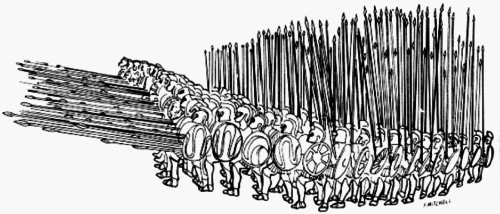Imagine it’s your weekly staff meeting. The Head starts talking about a contentious new dyslexia initiative mooted on the TV that morning. She turns to you for an opinion.
Your colleagues swivel to you. You don’t really want to give your own thoughts before you hear both sides of the issue. You haven’t had a chance to mull it over. But all eyes are on you, expecting a judgment!
Seem a little far-fetched? Odd as this would be, we can unwittingly put our pupils in the same situation during class discussions. When faced with the chance to give an opinion, some children struggle to say something, simply because they don’t have one yet. And they aren’t going to make one up with all eyes on them.
So this week, a tried-and-tested classroom activity to let both sides of a question be heard, in a low stakes environment, so that pupils are more confident to give an informed, reasoned opinion: Phalanx Philosophy
r
Phalanx Philosophy
In ancient times, the Phalanx was a tightly knit military formation, stood close together to lower exposure and protect the soldiers.
r

r
We use this a lot, most recently with a Reception class at Reigate St. Mary’s School last Tuesday. Here’s a step by step guide:
- With pupils stood in a circle, divide your space in half with a skipping rope or metre ruler.
- Ask your question. The class at Reigate had been studying African animals, so we used ‘Having a pet tiger. Good idea or bad idea? Stand over this side for good idea, stand over that side for bad idea.‘ For the youngest, this cements which side is which, and also makes the next step more fun and unusual!
- Demand that everyone move over to one side. You’ll now have them all closely huddled together like a phalanx. Get them to turn to each other and share reasons, or ‘becauses’ for this side.
- Move everyone to the other side,and do the same. Don’t “hear back from the pairs” before you do this: just go straight to paired talk on the other side.
- Now ask them the question again, and let them show what they think now. Now is the time for some to share their reasons with the whole group, because they have had a chance to rehearse what they might say.
Just like in a Phalanx, being in a block close together lowers their exposure (including their exposure to you). It’s like a shoal of fish – safety in numbers!
Exactly the same activity, with a suitable question, helps teenagers working on argumentative writing, or you can use it to liven up a longer philosophical enquiry. Having to think of reasons for both sides encourages them to take risks and say things they perhaps wouldn’t otherwise.